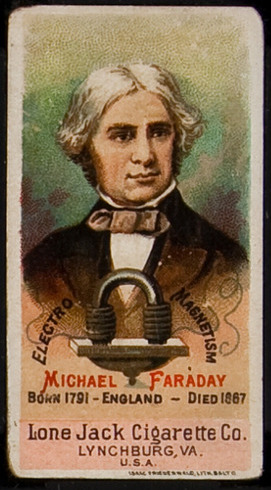
By Jim O’Neal
Wars fought from the air can be traced back to the creation of rubber balloons first made by Professor Michael Faraday in 1824 for use in his experiments with hydrogen at the Royal Institution in London (where he would later become the first Fullerian Professor of Chemistry). However, it was his work with electricity and magnetism that earned him greater fame. Virtually all electricity produced today is based on Faraday’s principles, whether it is coal, oil, gas, nuclear, hydro or wind.
Faraday (1791-1867) declined an offer of knighthood since he believed the Bible forbade earthly accumulations of wealth or honor and stated that he “preferred to be plain Mr. Faraday to the end.” He also declined to assist the British government with the production of chemical weapons, on ethical grounds, for the Crimean War (1853-1856) … a position the current government now apparently agrees with given recent activities in Syria.
I can attest to the many honorific symbols in greater London today and Albert Einstein kept a picture of Faraday on a wall next to Isaac Newton to acknowledge their enormous contributions to the extension of electromagnetism in space. Not bad for “plain” Mr. Faraday.
His work on balloons was preceded by the French Montgolfier brothers in 1783 while perched on a hillside watching a bonfire:
“I wonder what makes the smoke go up.”
“Perhaps warm air is lighter and the cold air pushes it up.”
“Then if we filled a bag with hot air, it would fly!”
Aeronautics was born.
Then on June 18, 1861, a stunned audience in Washington watched a giant balloon, the Enterprise, rise 500 feet. A man in it sent a telegraph to President Lincoln … “Sir: From this point of observation we command an area of nearly 50 miles in diameter. I have the pleasure of sending you this first telegram ever dispatched from an aerial station… T.S.C. Lowe”
This was a prelude to the short-lived formal use of aerial observations by the Armed Forces. The first balloon bought for the American military was an $850 model of raw India silk built by John Wise of Lancaster, Pa. Both sides in the Civil War were basically incapable of utilizing balloons for little more than observation of troop positions since any kind of armament was simply too heavy to be carried aloft. Aerial photography service was offered but never acted on. After viewing the First Battle of Bull Run, Lowe and other balloonists formed the Union Army Balloon Corps, but disbanded in August 1863. Confederate efforts were even more modest and legend has it that (sadly) the very last silk dress in the entire Confederacy was used to try and make a balloon.
Then a man by the name of Billy Mitchell enlisted as a private in the Spanish-American War, where he became a member of the U.S. Army Signal Corps. Subsequently, he served in France during World War I and ultimately became regarded as the father of the U.S. Air Force. It was his stubborn insistence that “the day has passed when armies or navies on the sea can be the arbiter of a nation’s destiny in war. The main power of defense and the power of initiative against an enemy has passed to the air” (November 1918).
That and a statement accusing senior leaders in the Army and Navy of incompetence and “almost treasonable administration of national defense” got him court-martialed. The court, which included Major General Douglas MacArthur as one of the judges, found him guilty on Dec. 17, 1925, and suspended him for five years. Ironically, MacArthur suffered a similar fate decades later for challenging conventional military wisdom.
We are now in the era where wars are fought using lethally armed unmanned aerial vehicles (UAVs) piloted from remote locations, and cruise missiles launched from ships up to 1,500 miles away. I was hoping we had the cyber-technology to destroy an enemy’s power infrastructure, disable their communications and simply render their offensive and defensive capabilities useless.
Maybe that’s only feasible for presidential elections using Facebook.
 Intelligent Collector blogger JIM O’NEAL is an avid collector and history buff. He is president and CEO of Frito-Lay International [retired] and earlier served as chair and CEO of PepsiCo Restaurants International [KFC Pizza Hut and Taco Bell].
Intelligent Collector blogger JIM O’NEAL is an avid collector and history buff. He is president and CEO of Frito-Lay International [retired] and earlier served as chair and CEO of PepsiCo Restaurants International [KFC Pizza Hut and Taco Bell].
